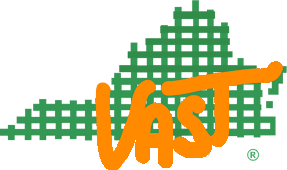By Mary Bigelow
Posted on 2013-04-04
 I’m incorporating several strategies this year to help my life science students understand written information. I provide study guides with questions to answer, graphic organizers, and quizzes on the information, but they still don’t seem to comprehend what they read. Do you have any other suggestions?
I’m incorporating several strategies this year to help my life science students understand written information. I provide study guides with questions to answer, graphic organizers, and quizzes on the information, but they still don’t seem to comprehend what they read. Do you have any other suggestions?
—Mary, Abilene, Texas
For many of our students, reading science text (a traditional textbook, a print article, or an online source) with its specialized vocabulary can seem like reading another language.
Unlike what students might see in their history classes, the topics in science resources are not usually written in a chronological sequence. Science text often starts with a main concept and then provides descriptions or supporting details. Unlike fiction in English class, science text often uses headings, subheadings, abstracts, summaries, sidebars, and graphics.—all of which contain text. Science text may be written from an expert point of view instead of the first person. Students may not realize that reading science text can be a slower process than reading a novel or story and going back to reread a section is appropriate. Guiding them through the reading process is important, especially for younger students, to help them process and understand the text.
With all due respect, it seems like you’re doing a lot of the work for them by designing study guides, selecting graphic organizers, and grading quizzes. What if students had the reverse assignment: What questions would you ask if you were making a test on this information?
In my collaborations with a middle level reading specialist, we had students put questions in the margin (or attach on a sticky note) as they read the material. We guided the students through several types of reading and questioning:
- Reading the lines. Some learning goals require literal information—for example, being able to name three types of volcanoes, define the term magma, or list three examples of igneous rocks. This was the easiest for students
- Reading between the lines. Learning goals requiring summarizing, comparing, contrasting, describing, or explaining require more thought as students formulate questions. How are sandstone and limestone alike? How are they different? Describe how igneous rock is formed. This required more guidance from the teacher with examples and modeling.
- Reading beyond the lines. Applying what they are learning to new situations, making connections to what they already learned, or asking additional questions might be new experiences for your students and also requires examples and modeling.
 Modeling with a “think aloud” makes the thinking process visible (and audible) to students. I observed a chemistry teacher do this. He displayed a page on an interactive white board. He read a paragraph aloud and then stopped. He described out loud how to attend to key words or phrases such as “there are three reasons…” He then put a note in the margin describing the main idea of the paragraph “What are three reasons for…” The students put the question in their margins and then used a highlighter to underline a few key phrases. The teacher showed and explained how he would highlight the text (e-readers or tablet applications have a built-in capability to add notes or underline). In his exit assessment, the students seemed to comprehend the material.
Modeling with a “think aloud” makes the thinking process visible (and audible) to students. I observed a chemistry teacher do this. He displayed a page on an interactive white board. He read a paragraph aloud and then stopped. He described out loud how to attend to key words or phrases such as “there are three reasons…” He then put a note in the margin describing the main idea of the paragraph “What are three reasons for…” The students put the question in their margins and then used a highlighter to underline a few key phrases. The teacher showed and explained how he would highlight the text (e-readers or tablet applications have a built-in capability to add notes or underline). In his exit assessment, the students seemed to comprehend the material.
These strategies—along with the ones you’re already using—help students process information while reading. But what happens after students have read the text? A study from Purdue University in 2011 looked at the effectiveness of several study strategies. The author of the study notes that practicing retrieving (through self-tests, for example) compared to other strategies (such as rereading) would result in better learning.
Self-testing through questioning could be an interesting action research project.
Photos:
www.flickr.com/photos/suttonhoo22/305806118/
www.flickr.com/photos/treevillage/5107999448/sizes/l/in/photostream/











 I’m incorporating several strategies this year to help my life science students understand written information. I provide study guides with questions to answer, graphic organizers, and quizzes on the information, but they still don’t seem to comprehend what they read. Do you have any other suggestions?
I’m incorporating several strategies this year to help my life science students understand written information. I provide study guides with questions to answer, graphic organizers, and quizzes on the information, but they still don’t seem to comprehend what they read. Do you have any other suggestions?  Modeling with a “think aloud” makes the thinking process visible (and audible) to students. I observed a chemistry teacher do this. He displayed a page on an interactive white board. He read a paragraph aloud and then stopped. He described out loud how to attend to key words or phrases such as “there are three reasons…” He then put a note in the margin describing the main idea of the paragraph “What are three reasons for…” The students put the question in their margins and then used a highlighter to underline a few key phrases. The teacher showed and explained how he would highlight the text (e-readers or tablet applications have a built-in capability to add notes or underline). In his exit assessment, the students seemed to comprehend the material.
Modeling with a “think aloud” makes the thinking process visible (and audible) to students. I observed a chemistry teacher do this. He displayed a page on an interactive white board. He read a paragraph aloud and then stopped. He described out loud how to attend to key words or phrases such as “there are three reasons…” He then put a note in the margin describing the main idea of the paragraph “What are three reasons for…” The students put the question in their margins and then used a highlighter to underline a few key phrases. The teacher showed and explained how he would highlight the text (e-readers or tablet applications have a built-in capability to add notes or underline). In his exit assessment, the students seemed to comprehend the material.

